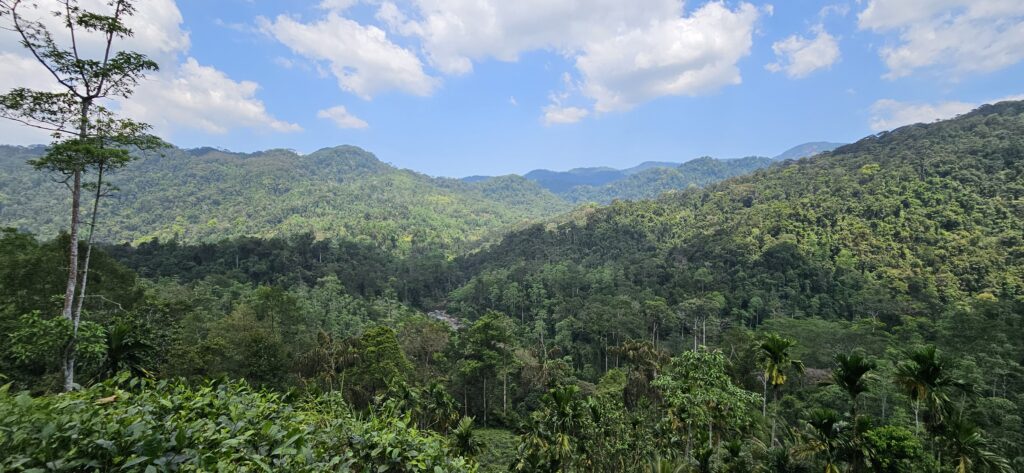
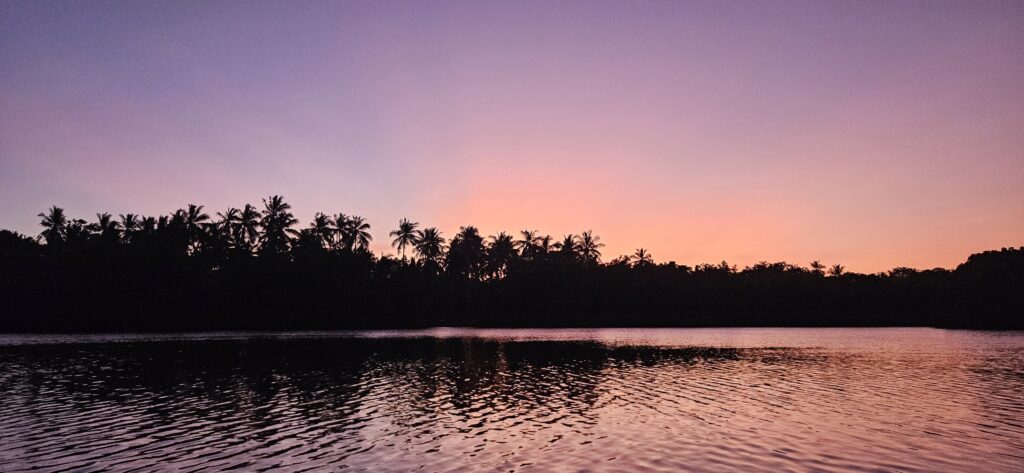
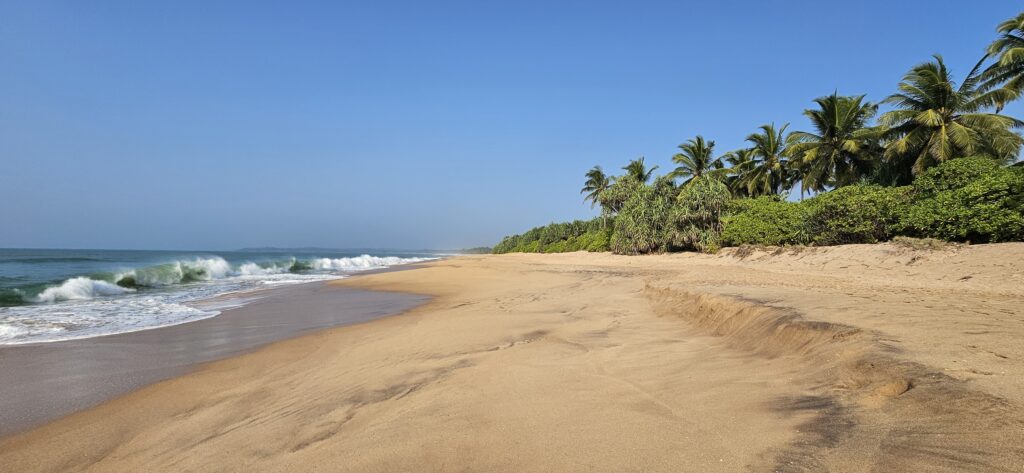
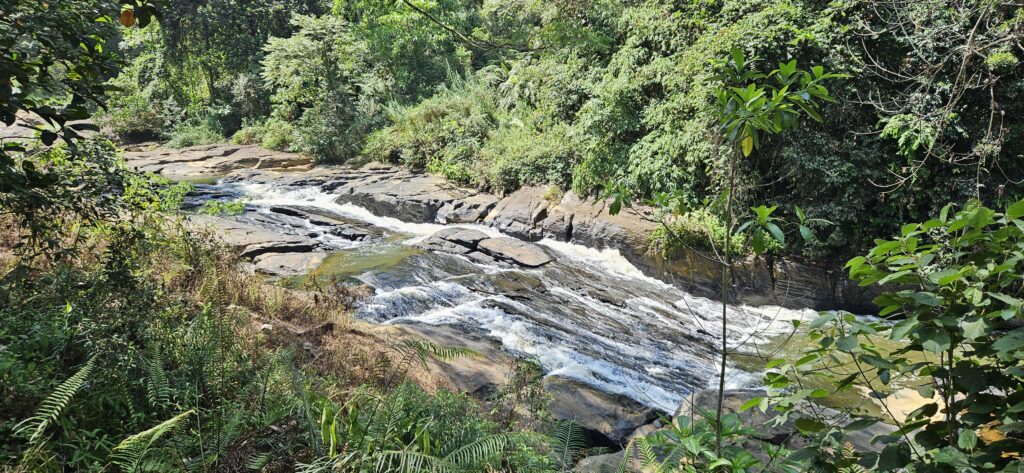
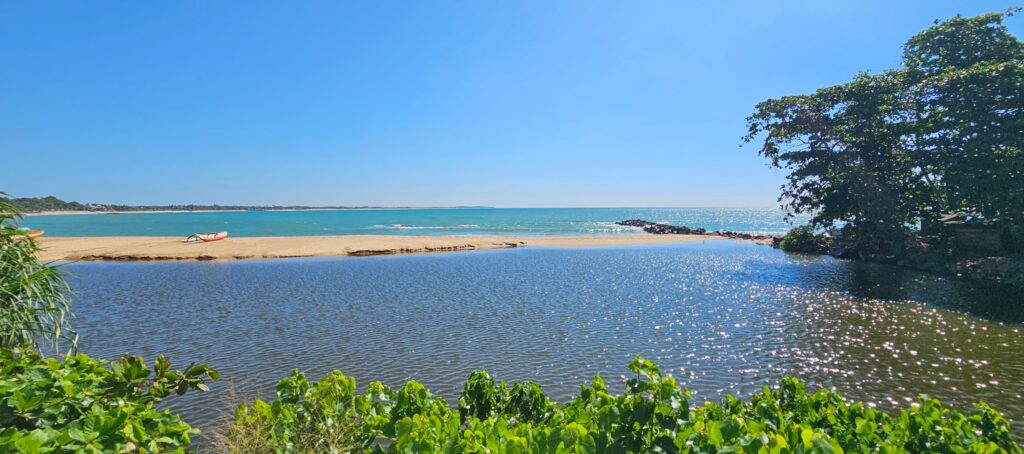
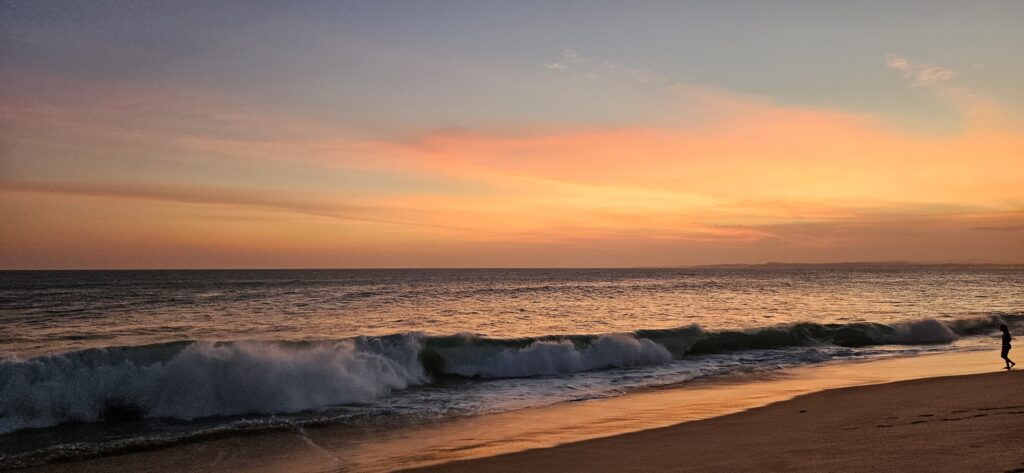
- Coasts
- Naupaka
- Screw Pine
- Mangrove
- Casuarina
- Beaches
- Galle, Mirissa and Dikwella
- Tangalle
- Marakolliya and Rekawa
Landscape in Sri Lanka
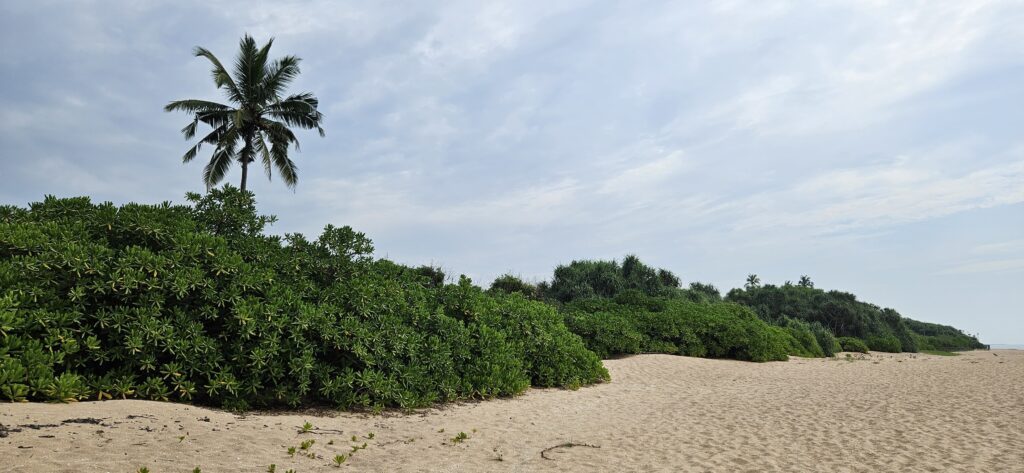
Coasts
We traveled along Sri Lanka’s west and south coasts. We were especially impressed by the coastal habitat around Tangalle. It features miles of pristine sandy beaches, natural lagoons and unspoiled coastal landscapes lined with coconut palms, mangroves, beach cabbage and screw pines. The latter cover large areas with almost impenetrable vegetation.
Naupaka
A characteristic coastal plant that often grows directly by the sea on sandy soil is Scaevola taccada, also known as Naupaka, beach cabbage or sea lettuce. Despite these names, the plant is not suitable as a food source. Its fleshy leaves, up to 25 cm long, contain bitter and potentially irritating compounds. In some tropical regions, however, they were reportedly used as famine food when no other options were available. Since many salt-tolerant coastal plants contain ascorbic acid, it is suspected that the fruits of Scaevola taccada may also contain small amounts of vitamin C. In the traditional medicine of Asia and Oceania, parts of the plant are used externally, for example, to relieve skin irritation or inflammation.
Naupaka grows up to three meters high and forms dense, bushy structures whose roots help stabilize the sandy soil, protecting it from coastal erosion. For sea turtles that come to the beaches to lay their eggs, the shrub provides a shady and protected environment. Like a natural barrier, it also shields more delicate vegetation from salty sea spray.
The plant displays its characteristic, fan-shaped, white to cream-colored flowers throughout the year. Its floating fruits are dispersed by ocean currents. On newly formed sandbanks in tropical regions, Naupaka is often the first plant to establish itself – a true pioneer plant!

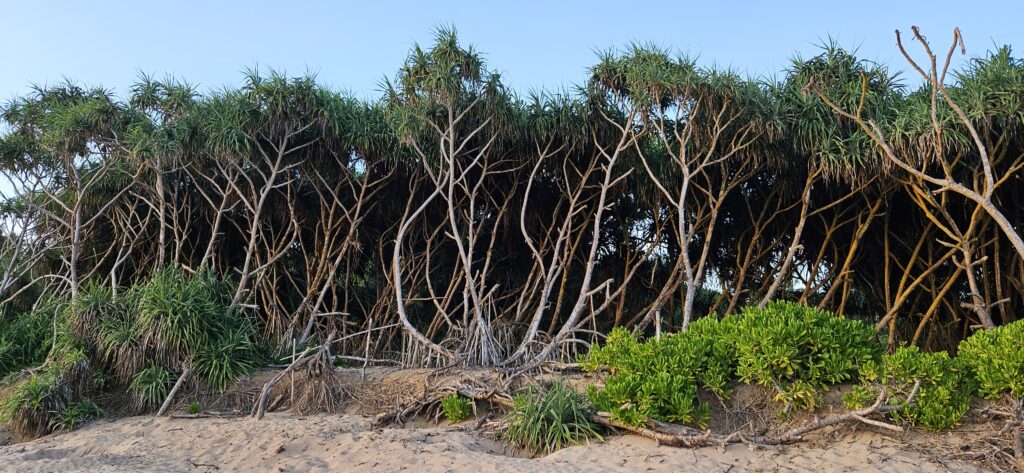
Screw Pine
The evergreen screw pine, also known as screw palm (Pandanus), includes more than 600 species and also grows near the sea. Looking like a hybrid of dragon tree and mangrove, it can grow both as a tree and as a shrub. Its name comes from the spiral shape of its long, narrow leaves, which grow like a screw around the trunk or branches. A distinctive feature is its aerial and stilt roots. Both types can absorb water (aerial roots take in rainwater), and the stilt roots also provide support.
Its individual fruits or drupes, which grow from the flowers of an inflorescence, are fused into one fruiting body. When unripe, they are green; when ripe, they turn orange-red and resemble a pineapple. Even when dried, they look very striking. The fruits of some species are even edible: Pandanus tectorius (also called Pandanus odoratissimus, this is the species we saw in Sri Lanka), Pandanus utilis and Pandanus julianettii. When several screw pines grow close together, they can look like a fairytale forest.
Mangrove
Mangroves are common in tropical coastal regions. Their highly developed root system allows them to survive in challenging environments like saltwater and oxygen-poor mud.
Mangrove is an ecological term, not a botanical one. It includes various plant species that grow in the tidal zones of tropical coastlines. In Sri Lanka, there are about 18 mangrove species, some of which are endemic or rare.
Mangrove forests form a fascinating ecosystem that provides habitat for countless animals: from fish, crabs, and shrimp to mussels, snails, insects, as well as birds, amphibians, and reptiles. The trees and shrubs serve as protected nurseries, food sources, and hunting grounds.
Like the hardy beach cabbage, mangroves also play an important role in coastal protection: they slow down storm surges and prevent erosion, thereby protecting both nature and people.
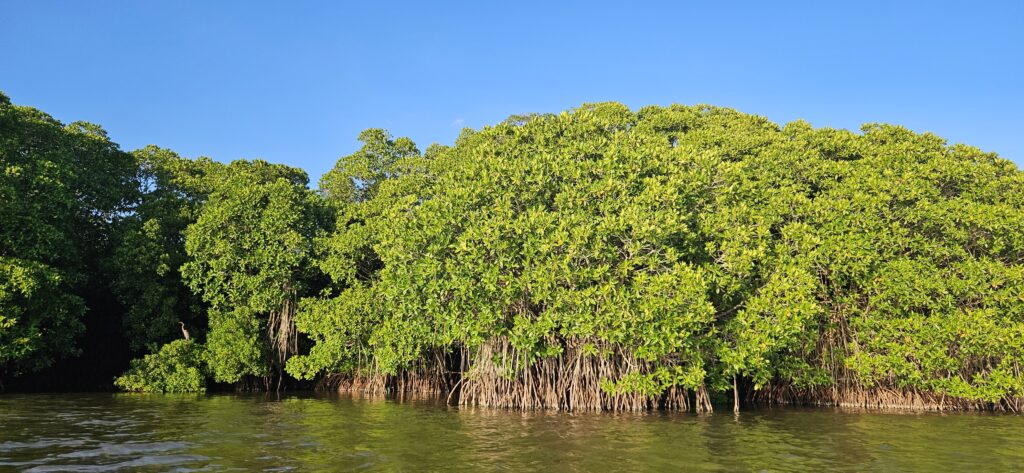
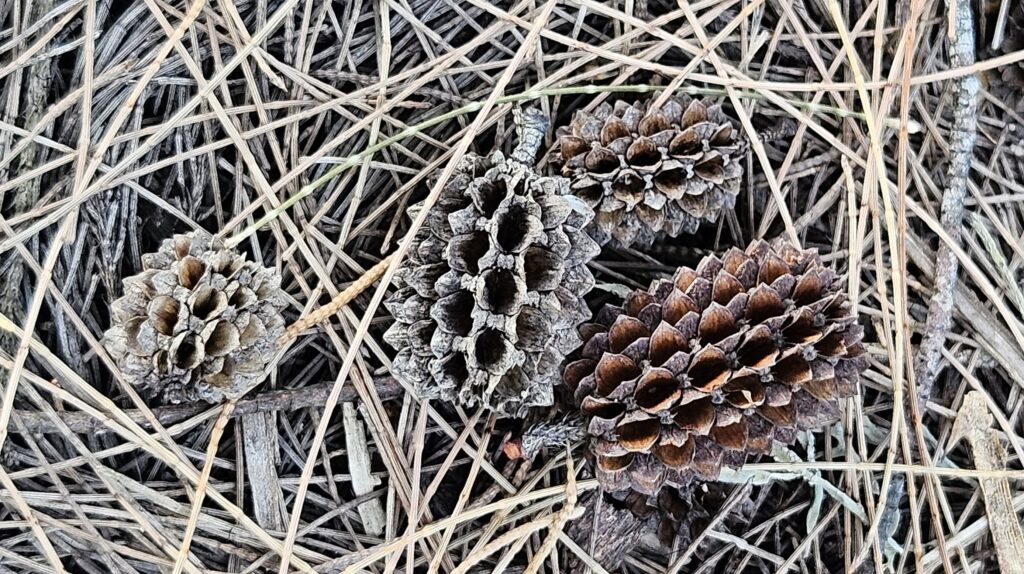
Casuarina
Casuarina trees are common along coastal areas like Rekawa because they tolerate salty conditions well. Their decorative fruits look like small cones. Together with their fine, needle-like branches, these trees resemble tropical relatives of conifers.
Beaches
The further we traveled from the west through the south toward the east, the more pristine the coastal landscape appeared. We started in Negombo and traveled along the coast southwards to Rekawa east of Tangalle. Along the way, we visited Ambalangoda, Hikkaduwa, Galle, Unawatuna, Mirissa, Dikwella, Hiriketiya and Nilwella before spending most of our time in Tangalle, especially at Marakolliya Beach.
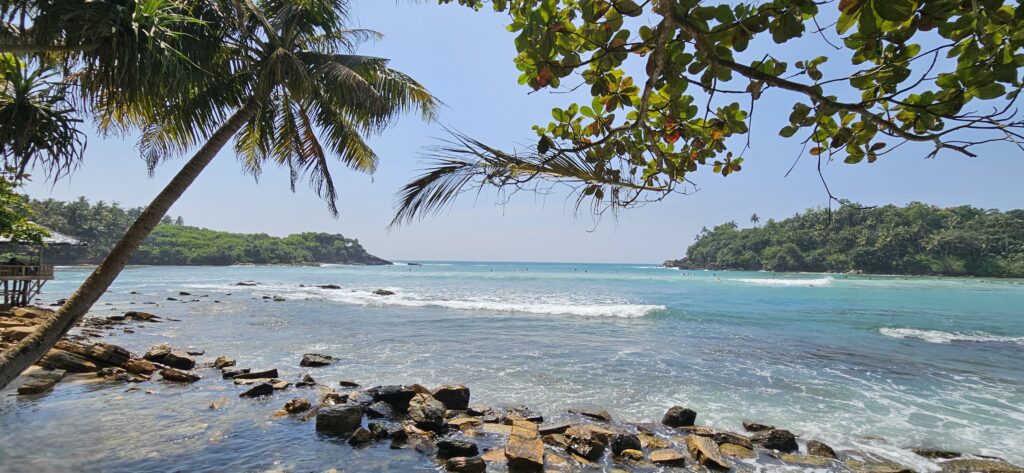
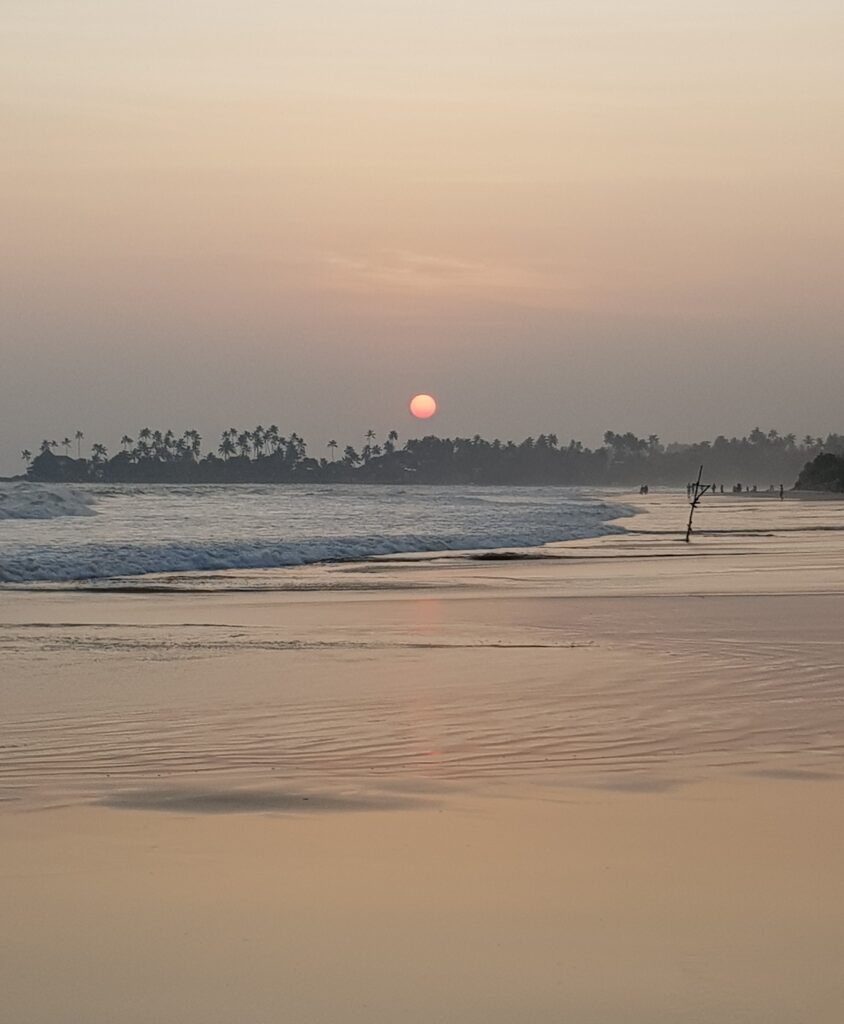
Galle, Mirissa and Dikwella
Despite their popularity with tourists, the beaches of Galle, Mirissa and Dikwella pleasantly surprised us. The water on the west side of the historic fort in Galle was calm, clear and turquoise. We liked the relaxed atmosphere and clean beach in Mirissa especially between Parrot Rock and Coconut Tree Hill. From the Mirissa Viewpoint we enjoyed a stunning panoramic view and the lighthouse is also clearly visible from there. The hilly area is perfect for hiking and you can stop at local places along the way. For sunsets on wide beaches Dikwella is especially recommended. As you go further west in Dikwella you find very quiet natural and undeveloped beach areas. The sand is white and incredibly fine. Hiriketiya was livelier but it was nice and relaxing to watch the surfers.
Tangalle
During our trip preparation, we learned early on that the beaches near Tangalle were supposed to be beautiful, so we planned to stay there for at least a week. The nature and the many animals enchanted us so much and exceeded our expectations for peace and biodiversity that we extended our stay to two weeks – unfortunately, we couldn’t stay longer. We regularly discovered new animals and plants, and even the sea waves looked different every day and night. We could watch them for hours. Especially during the full moon, the entire landscape between the beaches of Rekawa and Marakolliya appears magical. After dark, we watched the moon rise – no artificial light anywhere nearby.
The town beach of Tangalle also appeared quite idyllic. We enjoyed having breakfast here for long hours by the blue shimmering Kirama Oya lagoon, which forms a beautiful contrast to the turquoise sea. West of Tangalle, there are beaches we almost don’t want to mention – Silent Beach is one of them, but the real hidden gem is even better… though it’s best kept secret. Until 8 a.m., we were here alongside the local fishermen the only people around, able to enjoy the stunning sunrise in unique tranquility, surrounded only by the sound of the sea, singing birds and occasionally surfacing sea turtles, until gradually the first surfers arrived.
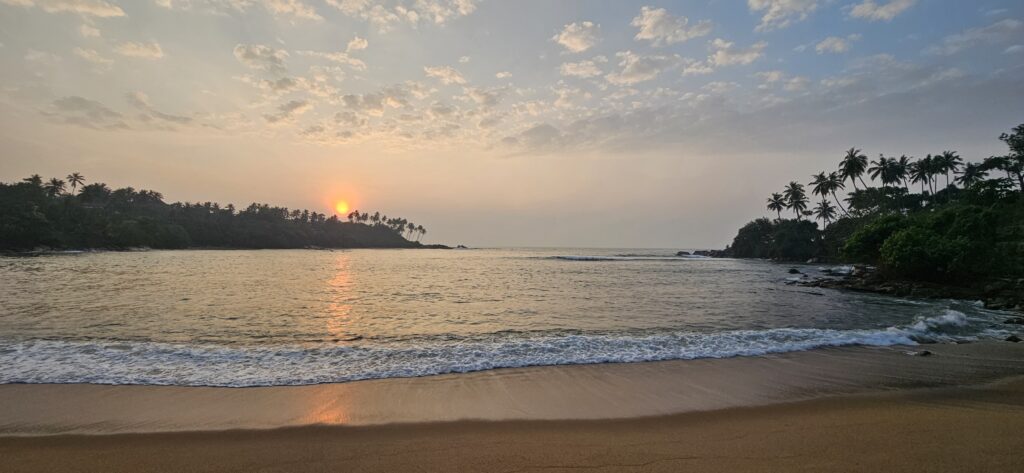
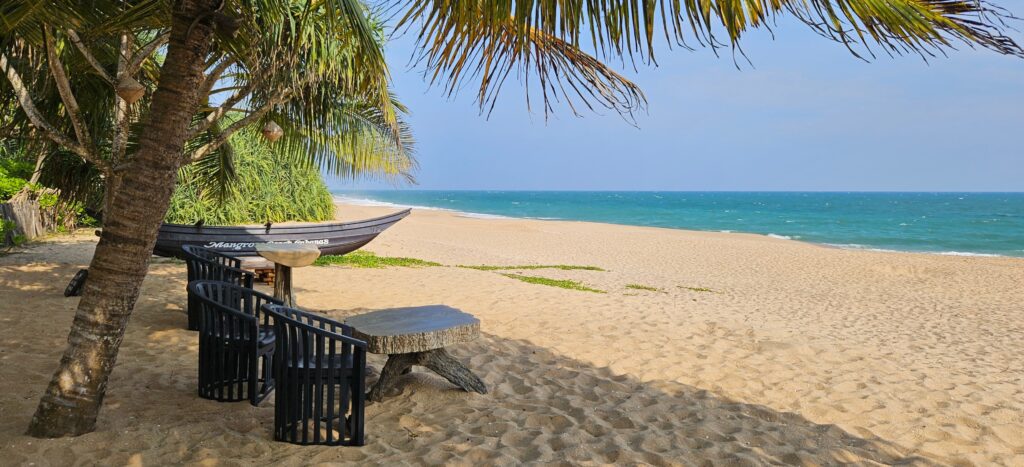
Marakolliya and Rekawa
Marakolliya and Rekawa are truly a dream for nature lovers, and we hope it stays that way for a long time: hardly any people, but a lush, undeveloped coastal landscape. Anyone seeking peace and even silence will find the right place here. East of the Mangrove Beach Cabanas, where you can relax, eat and drink, the coastline remains delightfully natural all the way to Rekawa Beach, without any hotels or bars. In Rekawa itself, there are only two restaurants, including the Turtle Beach, from where we enjoyed a wonderful view of the sunset. At dusk, we walked from Rekawa toward Marakolliya to our accommodation. It took us about two hours, so it’s really not a long walk, even though it might seem so when looking eastward from Marakolliya.
Both beaches are publicly accessible but become important nesting sites for endangered sea turtles at night. Anyone visiting here should avoid artificial lights, noise, and nighttime disturbances – for the sake of the animals.
A particularly scenic section lies where the strip of land between Rekawa Lagoon and the Indian Ocean is especially narrow. From the beach, you can see this protected area and, behind dense vegetation of trees and shrubs, glimpse the lagoon. Among white and pink-flowering periwinkle (Catharanthus), delicate purple crown flowers (Calotropis gigantea) and the pink blossoms of beach morning glory (Ipomoea pes-caprae), we spotted numerous herons and colorful butterflies.




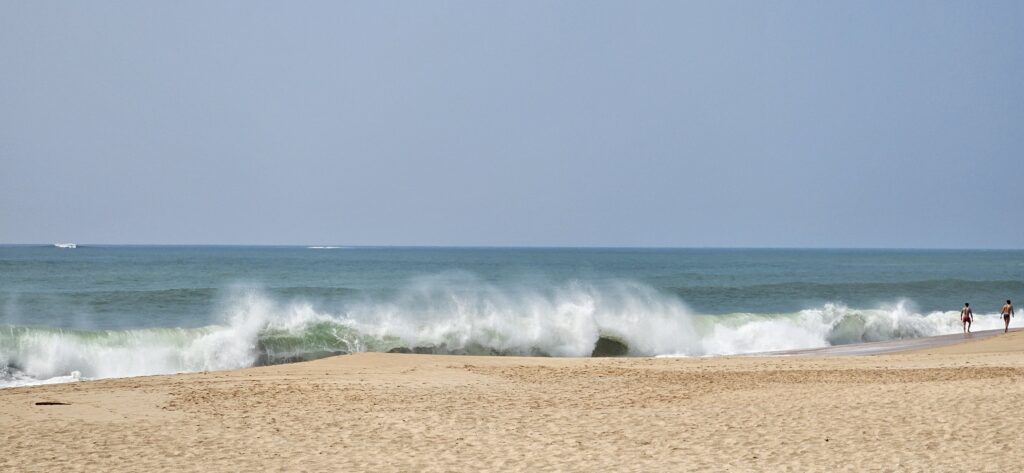
Leave a Reply